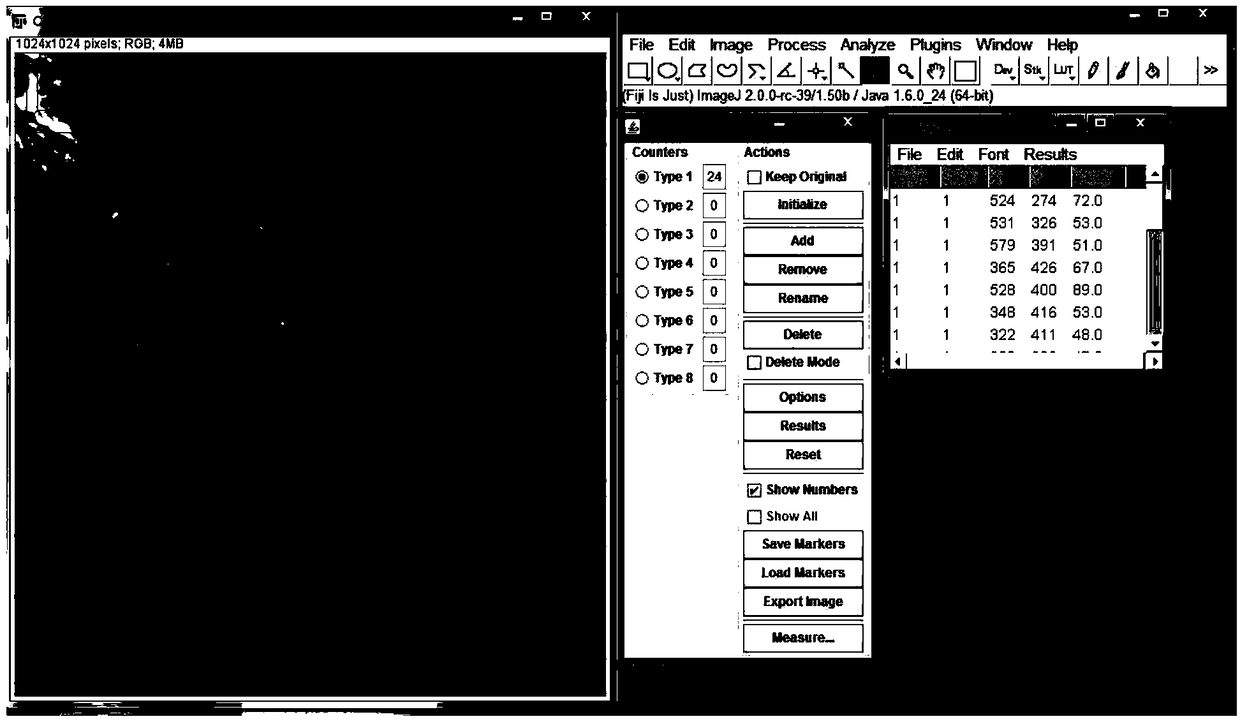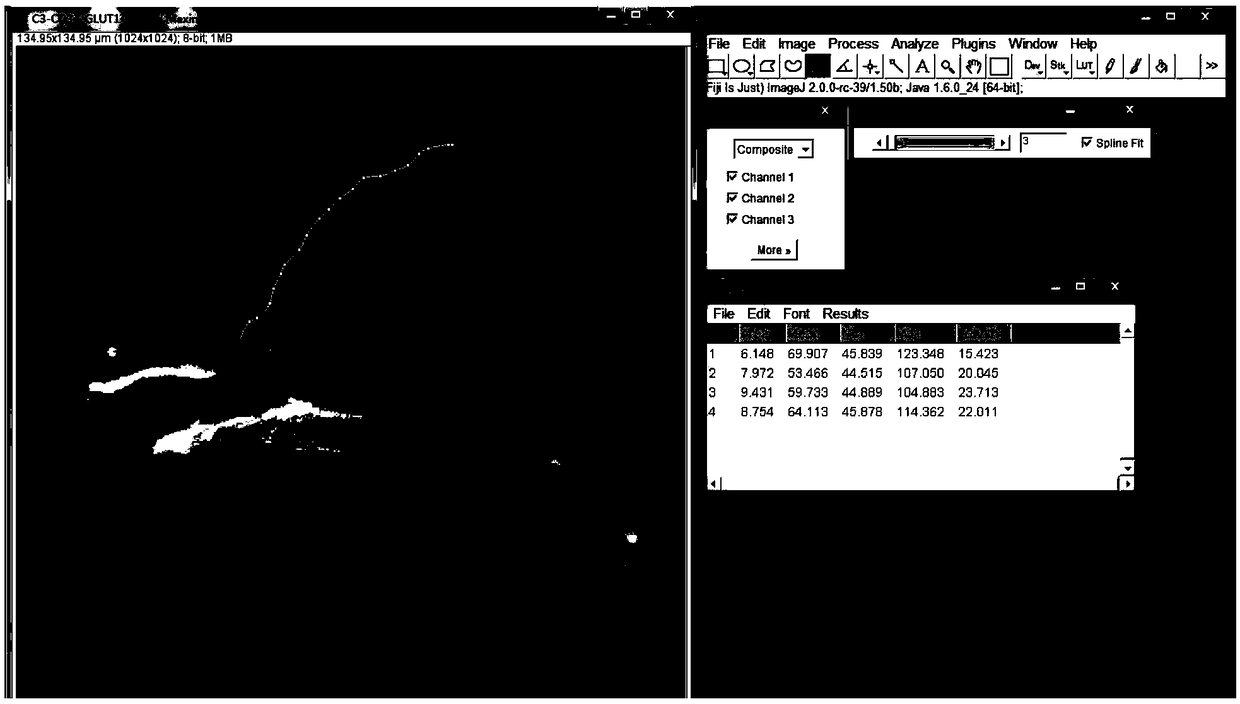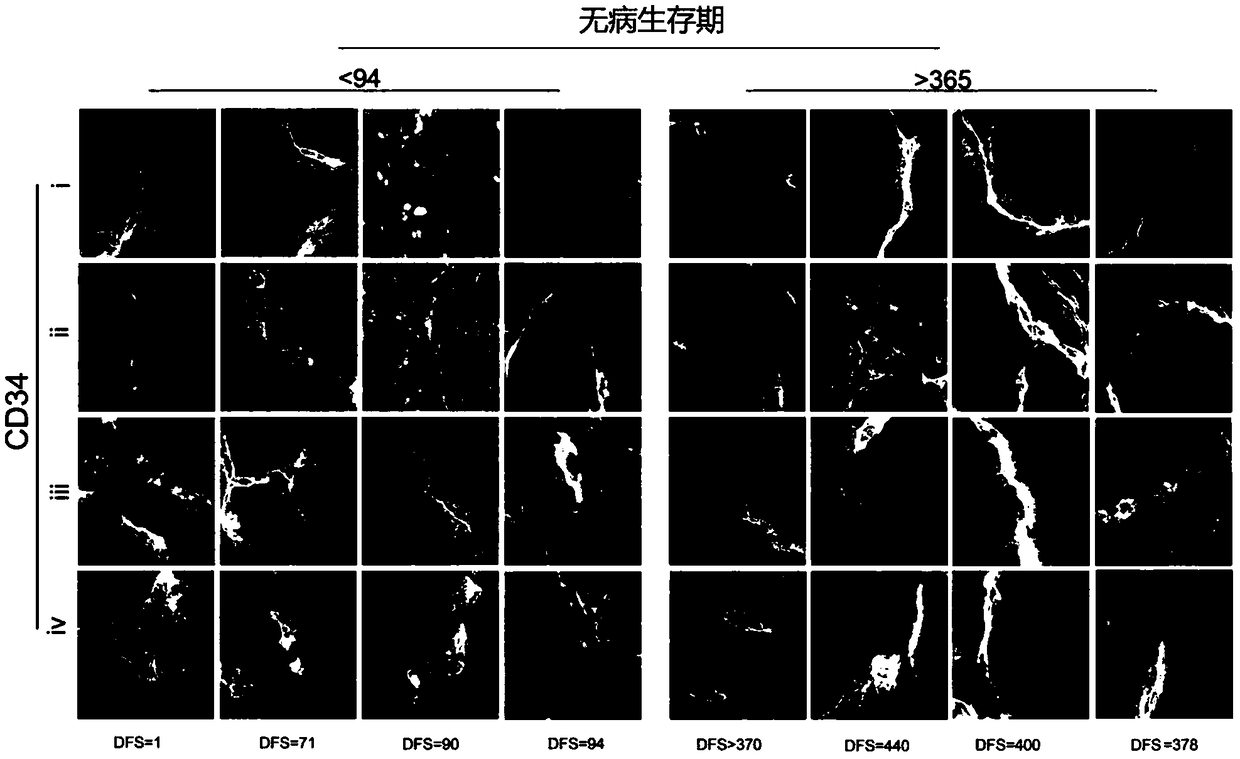A kit for predicting the risk of pancreatic cancer postoperative recurrence
A technique for pancreatic cancer and a kit is applied in the field of kits for predicting the risk of postoperative recurrence of pancreatic cancer, which can solve the problems of poor sensitivity and specificity, and achieve the effects of convenient use, high repeatability and strong stability.
- Summary
- Abstract
- Description
- Claims
- Application Information
AI Technical Summary
Problems solved by technology
Method used
Image
Examples
Embodiment 1
[0039] Example 1 Kit for Predicting Postoperative Recurrence Risk of Pancreatic Cancer
[0040] This embodiment provides a kit for predicting the postoperative recurrence risk of pancreatic cancer, including:
[0041] 1) Solution: 4% paraformaldehyde, 0.01M PBS containing 30% sucrose, 0.01M PBS containing 10% donkey serum and 0.2% Triton X-100 in 0.01M PBS, containing 5% donkey serum and 0.2% Triton X -0.01 MPBS of 100;
[0042] 2) Antibody: CD34 antibody (abcam company, #8536), GLUT-1 antibody (abcam company, #18356), immunofluorescence secondary antibody (Invitrogen company, Alexa-555 labeled donkey anti-mouse secondary antibody and Alex-488 labeled donkey anti-rabbit secondary antibody);
[0043] 3) serum: donkey serum (sigma company)
[0044] 4) Water-soluble anti-catabolism mounting agent: Fluoromount-G fluorescent mounting agent (southern biotechnology company);
[0045] 5) Image analysis software: Image J;
[0046] 6) The average and median length high-risk thresho...
Embodiment 2
[0051] Example 2 Using the kit in Example 1 to process tumor tissue samples
[0052] 1. Collection of human pancreatic cancer tissue samples
[0053] Pathologists or surgeons collect tumor specimens. The length of the collected tumor tissue is 0.5-1.2cm, the width is 0.5-1.2cm, and the thickness is 0.2-0.5cm. When sampling the tumor, it should be as close to the center of the tumor as possible, and the surrounding tissue may not be taken. After sampling, quickly fix in freshly prepared 4% paraformaldehyde (PFA), then store and transport in a 4-degree refrigerator, fix for 24-48 hours, and then put in 30% sucrose / PBS (phosphate buffer solution) Dehydrate overnight.
[0054] 2. Preparation of Thick Sections of Tumor Tissue
[0055] The tumor tissues were taken out from the 30% sucrose / PBS solution, and slices with a thickness of 45 μm were made with a cryostat.
[0056] 3. Section staining
[0057] ①Wash the tissue sections in 0.01mol PBS three times, then place the suspend...
Embodiment 3
[0063] Embodiment 3 image processing and standard curve establishment
[0064] We used 6-12 CD34 and sugar transporter-1 (GLUT-1) or cytokeratin (cytokeratin, CK) antibody immunofluorescent double-stained sections to scan the basal microvilli of microcirculatory endothelial cells in a patient with pancreatic cancer, and used GLUT- 1 antibody or CK antibody staining to determine the location and location of tumor cells.
[0065] Use a Zeiss 710 laser confocal microscope to read 5-8 immunofluorescent stained tumor sections of a patient. After reading the fluorescent sections, determine the 5-15 microvessels with the most microvessels in the tumor tissue for counting, measurement and calculation.
[0066] Microscope scanning parameters: pixel (pixel): 1024×1024, linear (liner): 2; Z-stack spacing: 1 μm; scanning speed: 5; digital offset (Digital offset): 100-250; Differences in the staining background, so other parameters can be adjusted according to needs.
[0067] Image analy...
PUM
| Property | Measurement | Unit |
|---|---|---|
| length | aaaaa | aaaaa |
| thickness | aaaaa | aaaaa |
| length | aaaaa | aaaaa |
Abstract
Description
Claims
Application Information
 Login to View More
Login to View More - R&D
- Intellectual Property
- Life Sciences
- Materials
- Tech Scout
- Unparalleled Data Quality
- Higher Quality Content
- 60% Fewer Hallucinations
Browse by: Latest US Patents, China's latest patents, Technical Efficacy Thesaurus, Application Domain, Technology Topic, Popular Technical Reports.
© 2025 PatSnap. All rights reserved.Legal|Privacy policy|Modern Slavery Act Transparency Statement|Sitemap|About US| Contact US: help@patsnap.com



